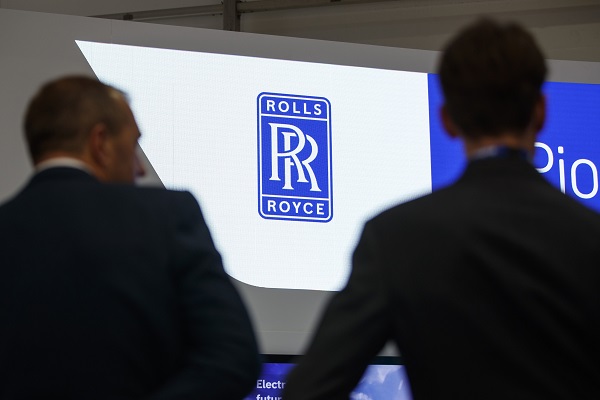What Rolls-Royce just told shareholders at this year's AGM
12th May 2022 13:25
by Graeme Evans from interactive investor
After a brief rally late last year, Rolls-Royce shares have trended steadily lower, but the company's latest update offers chinks of light for long-suffering shareholders. These are the key findings from the AGM.

A “positive surprise” for long-suffering Rolls-Royce Holdings (LSE:RR.) shareholders based on an upbeat outlook in civil aerospace helped the engines giant ride out market turbulence today.
The shares were close to their opening mark, a resilient performance in the context of a 2.2% fall for the FTSE 100 index, as the company also stuck to financial guidance that 2022 will see profit and cash flow progress.
For shareholders gathering in Derby at the company’s annual meeting, the reassuring update provided only small comfort after another frustrating year in which the much-anticipated recovery for Rolls shares has failed to materialise.
The stock is down more than 20% over the past year and stands 10p below the 90p a share paid by banks for surplus shares in November 2020’s heavily discounted £2 billion rights issue. That fundraising offered existing investors the chance to buy shares at 32p a share.
The shares were 146p in November but have fallen on both economic and leadership uncertainty after CEO Warren East announced plans to stand down at the end of this year.
- Your vote counts: BP, Aviva, Rolls-Royce and Lloyds
- Rolls-Royce shares dealt hammer blow, but all systems go for BAE
- Chart of the week: Rolls-Royce shares at a critical juncture
- Recessions are becoming more likely – here’s how to invest
East told the AGM today that Rolls was now a “better balanced and more resilient business with a sustainable future” after actions taken since the pandemic included wide-scale restructuring in civil aerospace costing about 9,000 jobs.
As well as these cost savings, the civil aerospace division has benefited from a 42% increase in large engine flying hours so far in 2022. This is the equivalent of 60% of 2019 levels and compares with Morgan Stanley’s forecast of 62% across the whole financial year.
Rolls said: “Passenger demand is recovering on routes where travel restrictions have been lifted, such as in Europe and the Americas, but additional Covid-19 restrictions have resulted in fewer flights in China where the situation is still evolving.”
The company is holding a civil aerospace site visit for investors tomorrow, where it is set to elaborate on medium-term expectations that underlying revenues in the division will grow at a low double-digit percentage compound average rate from 2021.
Rolls also sees an operating margin percentage in the high-single digits, with trading cashflow comfortably exceeding operating profit.
Morgan Stanley said: “We view the mid-term outlook for the civil business as a positive surprise, with high-single digit civil margin likely to be the focus.
“Given recent share price weakness, we also view maintained FY22 guidance as positive, though supply chain challenges have reduced latitude around this.”
The City bank, whose current forecasts are for large engine flying hours to be back at 2019 levels in 2025, has a price target of 132p.
Today’s reassuring update also revealed strong performances in the Defence and Power Systems divisions, keeping Rolls on track for City guidance for low-to-mid single digit revenue growth, a flat margin year-on-year and modest positive free cash flow in 2022.
- Daily Trading Flash: 10 most-traded shares 12 May 2022
- Be careful with this high-profile stock
- How this investor is fighting fear amid market turbulence
- Eight star fund managers you can buy on the cheap
On Defence, Rolls explained that its products and services are delivered and maintained over decades of service and not immediately exposed to geopolitical events.
However, it added: “Our strong order backlog gives us confidence on revenue, profit and cash conversion against the headwinds of inflation and supply chain risk.”
In Power Systems, Rolls said the first four months of order intake have been “very strong”, particularly in the power generation and defence end markets.
Interest in sustainable solutions has increased, with the first engines for power generation, construction and industrial applications approved for operation with sustainable fuels.
Opportunities around the global energy transition are also being targeted in the company’s New Markets division, which includes the development of small modular nuclear reactors.
Civil aerospace accounted for 41% of last year’s £10.9 billion underlying revenues, followed by 31% from defence, 25% from power systems and 3% from new markets.
These articles are provided for information purposes only. Occasionally, an opinion about whether to buy or sell a specific investment may be provided by third parties. The content is not intended to be a personal recommendation to buy or sell any financial instrument or product, or to adopt any investment strategy as it is not provided based on an assessment of your investing knowledge and experience, your financial situation or your investment objectives. The value of your investments, and the income derived from them, may go down as well as up. You may not get back all the money that you invest. The investments referred to in this article may not be suitable for all investors, and if in doubt, an investor should seek advice from a qualified investment adviser.
Full performance can be found on the company or index summary page on the interactive investor website. Simply click on the company's or index name highlighted in the article.